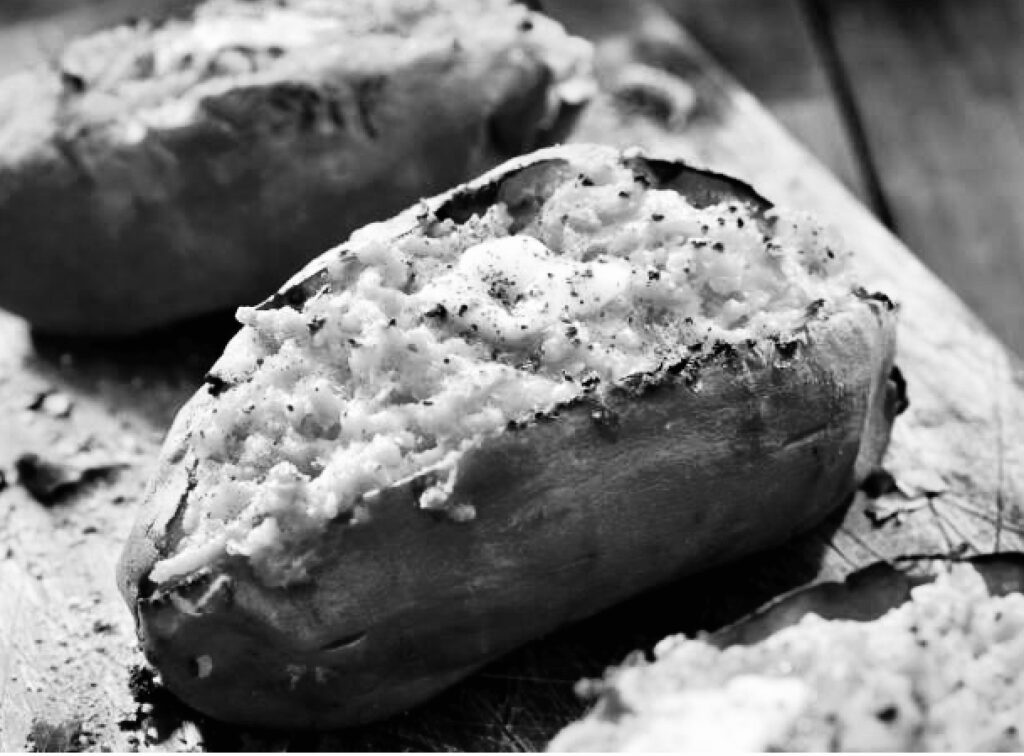
SWEET POTATOES (Ipomoea Batatas)
Sweet Potatoes belong to a large family of tropical vines, many with thick fleshy roots which includes Morning Glories. Today ‘sweet potato vines’ are a popular ornamental plant used by gardeners in pots to add trailing interest in an arrangement, often referred to as a ‘spiller’. These are not good sweet potatoes for eating because they are too hard to chew and lack flavor.
HISTORY OF SWEET POTATOES
Our popular edible orange or purple Sweet Potatoes have been cultivated in Central and South America for over five thousand years. There are also white and yellow varieties. Researchers believe its origin was in the Andes Mountains where it was grown by the ancient Peruvian people in what became the Inca Empire. The great Inca Empire survived for centuries before the arrival of Columbus and his compatriots.
The Spanish Europeans believing anyone who was not a Catholic was fair game plundered the New World. The Conquistadors stole shiploads of gold and silver and shipped it home to Spain.
On Columbus’ forth return journey to Spain he also bought back to Spain many of the vegetables we eat today. Potatoes, tomatoes and chili peppers to name a few. In the centuries to follow these New World foods were going to change and enrich the cuisines of the Old World, Europe and Asia.
There is at least one vegetable on our Thanksgiving Day tables that traveled without the help of Europeans, the sweet potato.
Researchers have discovered evidence that the sweet potato made the trip first from the mountains of Peru to the west coast of South America and from there began its incredible journey. The sweet potato traveled five thousand miles to the islands of Polynesia four hundred years before King Ferdinand and Isabella’s ships landed in the Americas.
Capt. James Cook’s crew picked up some of the root vegetables in Polynesia in 1769. Examining the genetic blueprint of Cook’s sweet potatoes allowed scientist to trace the Polynesian Sweet Potato’s evolution all the way back to Ecuador and Peru. Additional research suggests the sweet potato was a staple in Polynesian diets since 1,000 AD.
It is now well known that the Polynesians were a mighty seafaring culture traveling hundreds or even thousands of miles for trade. Many scientists credit the Polynesian travelers for spreading the sweet potato on their trading expeditions.
Some researchers believe the sweet potato may have traveled without any human assistance, but was spread by birds carrying it in their wings or internally passing seeds though their bodies.
Today we add to the confusion by lumping sweet potatoes and yams together, often confusing the two. Actually, the two are not even related. Sweet Potatoes are from the morning glory family and Yams are related to lilies and grasses.
White potatoes are only distantly related to sweet potatoes. Although they both came from same region, whitepotatoes belong to the nightshade family (Solanaceace), which also includes many other important crops like peppers, tomatoes, tomatillos, eggplant, tobacco and others.
SWEET POTATOES ARE A SUPER FOOD
Today the edible sweet potatoes, especially the orange or purple type are highly nutritious and considered a super food. They are a great source of fiber, vitamins, and minerals. In order to get the highest benefit, it is important to eat the skin also.
Sweet Potatoes are rich in antioxidants that protect your body from free radicals. (Free radicals are unstable molecules that can damage DNA and trigger inflammation.) Eating them can help fight off chronic illnesses like cancer, heart disease, and aging.
As if these advantages aren’t enough, the fiber and antioxidants in purple sweet potatoes are advantageous to stomach health. Sweet potatoes contain two types of fiber, soluble and insoluble.
Test-tube studies have found that antioxidants in purple sweet potatoes promote the growth of healthy stomach bacteria. Yellow sweet potatoes lack many of the benefits we are discussing in this article.
When the Portuguese introduced the sweet potatoes to Africa, they brought the white and yellow varieties. Today many humanitarian groups are introducing the orange sweet potatoes successfully increasing vitamin A intake in their daily diets. This has proven to cut mortally rates in Africa by 25 percent.
Sweet Potatoes are known to be beneficial to individuals with type 2 diabetes due to the high levels of magnesium and fiber, which can aid in reducing insulin resistance and stabilizing blood sugar. Talk to your doctor before adding them to your daily diet.
Happy Autumn Everyone,
James
